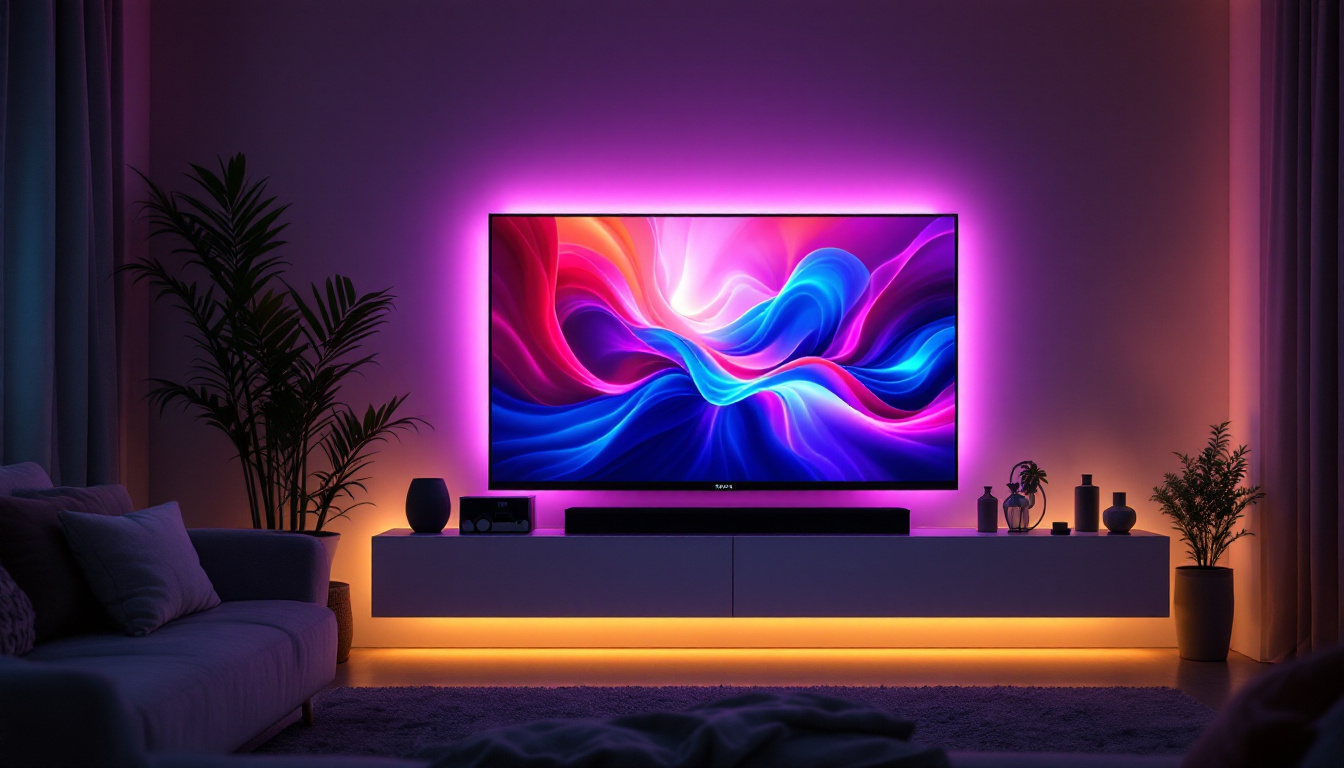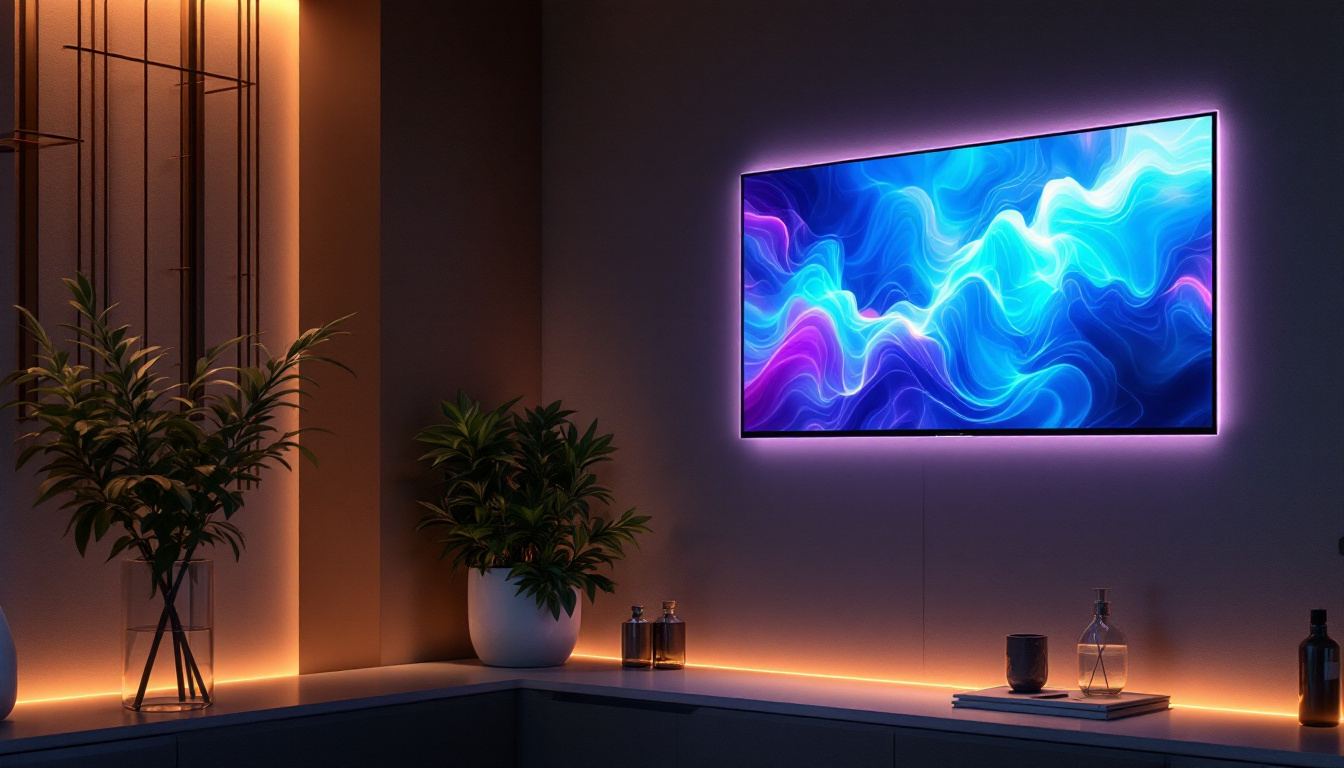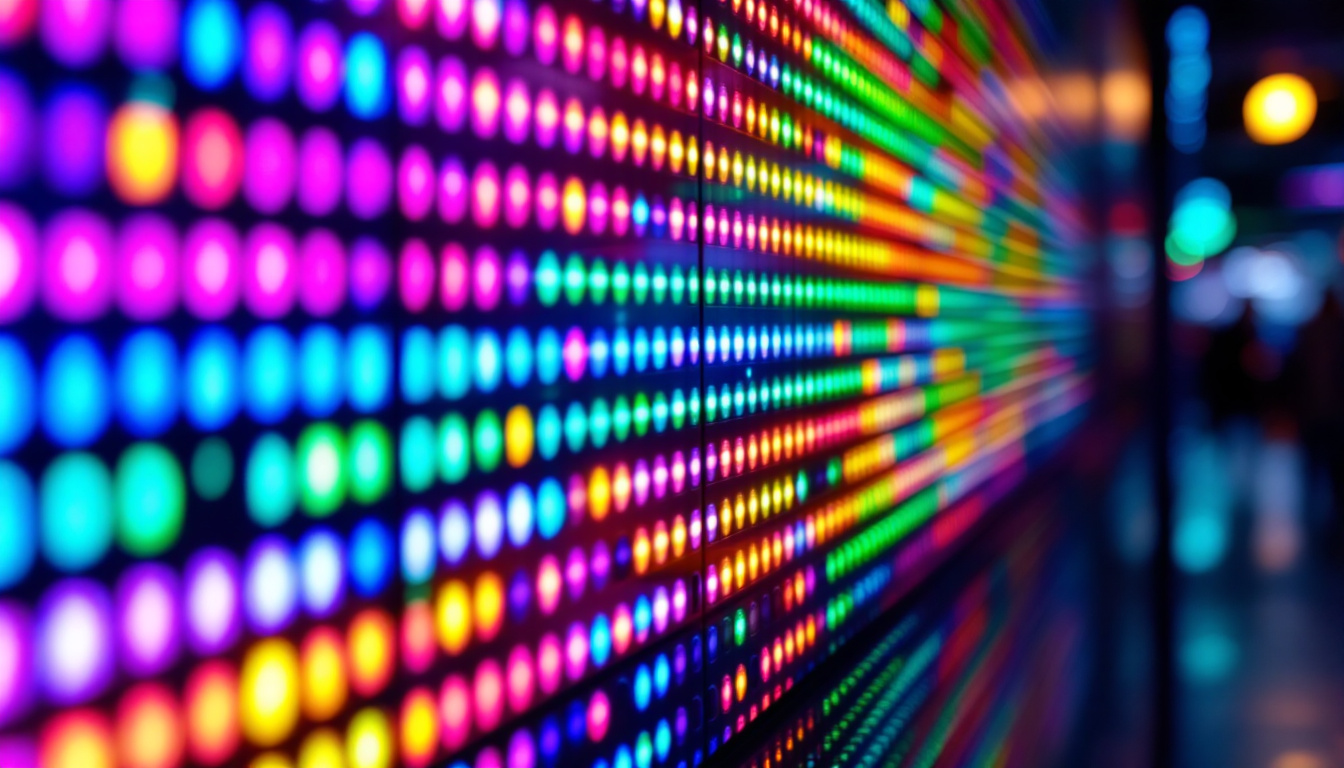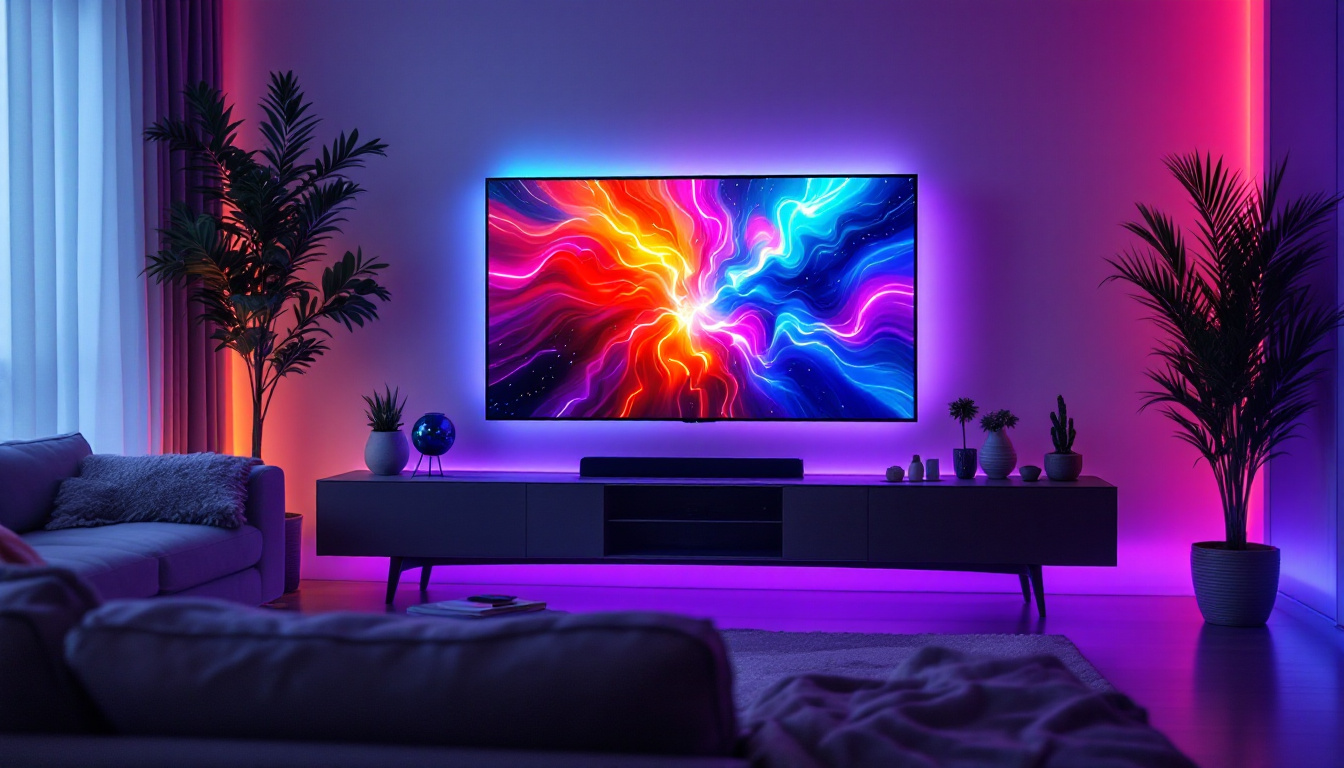What Is LCD Monitor: LED Display Explained
In the realm of modern technology, the terms LCD and LED are often used interchangeably, leading to confusion among consumers. Understanding the differences and similarities between these two types of displays is crucial for making informed purchasing decisions. This article delves into the intricacies of LCD monitors and LED displays, illuminating their features, benefits, and applications.
Understanding LCD Technology
Liquid Crystal Display (LCD) technology has revolutionized the way we view images and videos. It utilizes liquid crystals sandwiched between two layers of glass or plastic. When an electric current passes through these crystals, they align in such a way that they either block or allow light to pass through, creating images on the screen. This innovative approach not only enhances the visual experience but also contributes to energy efficiency, making LCDs a preferred choice in both consumer electronics and professional environments.
The Components of an LCD Monitor
An LCD monitor consists of several key components that work together to produce high-quality images. The primary elements include:
- Liquid Crystals: These are the core of the display, responsible for modulating light and creating images.
- Backlight: Traditionally, LCDs use fluorescent lamps as a backlight source, but advancements have led to the use of LEDs in modern displays.
- Polarizers: These layers filter light, ensuring that only the desired wavelengths reach the viewer’s eyes.
Each of these components plays a vital role in the overall performance of the monitor, influencing factors such as brightness, contrast, and color accuracy. Additionally, the arrangement of these components can vary, leading to different types of LCD technologies, such as Twisted Nematic (TN), In-Plane Switching (IPS), and Vertical Alignment (VA), each with its unique advantages and disadvantages tailored for specific uses.
How LCD Monitors Work
The operation of an LCD monitor can be broken down into a few essential steps:
- The backlight emits light, which passes through the first polarizer.
- The liquid crystals then manipulate this light based on the electrical signals they receive.
- Finally, the light passes through a second polarizer before reaching the viewer’s eyes, forming the images we see.
This process allows for the display of vibrant colors and sharp images, making LCD monitors a popular choice for a variety of applications, from gaming to professional design work. Furthermore, the rapid response time of LCDs has made them increasingly suitable for fast-paced video content, reducing motion blur and enhancing the overall viewing experience. As technology continues to evolve, we can expect even more advancements in LCD technology, such as higher resolutions and improved color gamuts, further pushing the boundaries of visual fidelity.
Exploring LED Technology
Light Emitting Diode (LED) technology is often associated with LCDs, but it represents a distinct advancement in display technology. While traditional LCDs use fluorescent backlighting, LED displays utilize semiconductor technology to produce light directly. This fundamental difference not only enhances the brightness and clarity of images but also allows for more innovative designs in consumer electronics.
Types of LED Displays
There are primarily two types of LED displays:
- Edge-Lit LED: In this configuration, LEDs are placed along the edges of the screen, providing a slim profile. This type is commonly found in ultra-thin televisions and monitors, making them ideal for wall mounting and modern interior designs.
- Full-Array LED: This setup features a grid of LEDs behind the entire screen, allowing for better brightness and contrast control. Full-array displays often support local dimming, enhancing the viewing experience. This means that certain areas of the screen can be dimmed or brightened independently, which is particularly beneficial for scenes with both bright highlights and deep shadows.
Each type has its advantages and is suited to different use cases, depending on the desired level of performance and cost considerations. For instance, while edge-lit displays are generally more affordable and lighter, full-array displays are favored by professionals in fields such as graphic design and video editing due to their superior color accuracy and contrast capabilities.
Benefits of LED Technology
LED displays offer several advantages over traditional LCDs, including:
- Improved Energy Efficiency: LED technology consumes less power than traditional fluorescent backlighting, making it a more environmentally friendly option. This energy efficiency not only reduces electricity bills but also contributes to lower carbon footprints, appealing to eco-conscious consumers.
- Better Color Accuracy: LED displays can produce a wider color gamut, resulting in more vibrant and lifelike images. This is particularly important for applications like photography and gaming, where color fidelity can significantly impact the overall experience.
- Thinner Design: The compact nature of LED technology allows for slimmer and lighter displays, enhancing portability and aesthetics. This has led to the proliferation of sleek devices that are not only functional but also stylish, appealing to a broad range of consumers.
These benefits have contributed to the widespread adoption of LED technology in various devices, from smartphones to large-screen televisions. Additionally, the versatility of LED technology has paved the way for innovations such as flexible displays and transparent screens, further expanding the possibilities of how we interact with visual content. As manufacturers continue to explore new applications for LED technology, we can expect to see even more exciting developments in the realm of display solutions.
Comparing LCD and LED Displays
While LED displays are often marketed as a separate category, it is essential to recognize that they are essentially a type of LCD technology. The primary difference lies in the backlighting method. Here’s a closer look at how they compare:
Image Quality
Image quality is a crucial factor for many users. LED displays generally offer superior image quality compared to traditional LCDs due to their enhanced brightness and contrast capabilities. The local dimming feature in full-array LED displays allows for deeper blacks and more vivid colors, making them ideal for watching movies and playing video games. Additionally, the color accuracy in LED displays is often superior, which is particularly beneficial for professionals in graphic design and photography who require precise color reproduction. This level of detail can significantly enhance the viewing experience, making it more immersive and enjoyable.
Cost Considerations
When it comes to pricing, traditional LCD monitors tend to be more affordable than their LED counterparts. However, the price gap has been narrowing as LED technology becomes more mainstream. Consumers should weigh the benefits of improved image quality and energy efficiency against their budget constraints. It’s also worth noting that while the initial investment in LED technology may be higher, the long-term savings on energy bills and the reduced need for replacements can make them a more economical choice over time. This consideration is particularly important for businesses or individuals who rely on their displays for extended periods each day.
Longevity and Durability
LED displays typically have a longer lifespan compared to traditional LCDs. The solid-state nature of LED technology means that it is less susceptible to damage from impacts or environmental factors. This durability makes LED displays a more reliable option for long-term use. Furthermore, LED screens often maintain their brightness and color accuracy over time better than traditional LCDs, which can suffer from color degradation and reduced brightness as they age. This longevity not only enhances the user experience but also contributes to a lower environmental impact, as fewer devices need to be disposed of and replaced.
Viewing Angles
Another important aspect to consider is the viewing angles of these displays. LED technology, particularly with IPS (In-Plane Switching) panels, offers wider viewing angles compared to traditional LCDs, which can suffer from color distortion and brightness loss when viewed from the side. This makes LED displays particularly advantageous in settings where multiple viewers are present, such as in conference rooms or living rooms, ensuring that everyone enjoys a consistent and vibrant picture regardless of their seating position. This feature is especially valuable for collaborative work environments or for families who enjoy watching movies together.
Energy Efficiency
Energy efficiency is becoming an increasingly important factor for consumers and businesses alike. LED displays consume less power than traditional LCDs, which not only helps reduce electricity bills but also contributes to a smaller carbon footprint. This efficiency is particularly beneficial for large installations, such as in offices or schools, where multiple screens are in use. As awareness of environmental issues grows, many consumers are leaning towards energy-efficient options, making LED displays a more attractive choice in the market. Additionally, advancements in technology continue to improve the energy efficiency of these displays, making them even more appealing for eco-conscious buyers.
Applications of LCD and LED Monitors
Both LCD and LED monitors have found their place in various industries and applications, catering to the diverse needs of users.
Consumer Electronics
In the consumer electronics market, LCD and LED displays are ubiquitous. From televisions to computer monitors, these technologies are used in devices that require high-quality visual output. The demand for LED displays has surged in recent years, driven by their superior performance and energy efficiency.
Professional Use
In professional environments, such as graphic design, video editing, and gaming, the choice of display technology can significantly impact productivity and output quality. Professionals often prefer LED displays for their superior color accuracy and contrast ratios, which are essential for detailed work.
Industrial and Commercial Applications
Beyond consumer use, LCD and LED monitors are employed in various industrial and commercial settings. They are used for digital signage, surveillance systems, and control rooms, where reliable performance and visibility are paramount. The versatility of these displays makes them suitable for a wide range of applications.
Future Trends in Display Technology
The display technology landscape is continually evolving, with advancements that promise to enhance user experiences further. Some emerging trends include:
OLED Technology
Organic Light Emitting Diode (OLED) technology is gaining traction as a potential successor to traditional LCD and LED displays. Unlike LCDs, OLED displays do not require a backlight, as each pixel emits its own light. This results in deeper blacks and more vibrant colors, making OLED a compelling option for high-end displays.
MicroLED Technology
MicroLED is another innovative technology that offers the benefits of OLED without some of its drawbacks, such as burn-in issues. MicroLED displays consist of tiny, individual LEDs that can be turned on or off independently, providing exceptional contrast and brightness levels.
Flexible and Transparent Displays
The development of flexible and transparent display technologies is opening new possibilities for how screens can be integrated into everyday life. These displays can be curved or rolled, making them suitable for a variety of applications, from wearable devices to architectural installations.
Conclusion
In conclusion, understanding the differences between LCD and LED displays is essential for anyone looking to purchase a new monitor or television. While both technologies have their merits, LED displays generally offer superior performance in terms of image quality, energy efficiency, and longevity. As technology continues to advance, consumers can expect even more innovative display solutions that enhance their viewing experiences.
Whether for personal use or professional applications, choosing the right display technology can significantly impact how content is experienced. As the market evolves, staying informed about the latest developments will empower consumers to make the best choices for their needs.
Discover Cutting-Edge LED Displays with LumenMatrix
Ready to elevate your visual experience with the latest in LED display technology? Look no further than LumenMatrix, a pioneer in crafting immersive and dynamic LED display modules. Whether you’re seeking to boost your brand’s presence with an Indoor LED Wall Display, make a statement in the great outdoors with an Outdoor LED Wall Display, or innovate on the move with a Vehicle LED Display, LumenMatrix has a solution tailored to your needs. From LED Sports Displays to Custom LED creations, our mission is to transform visual communication and captivate your audience. Don’t miss the opportunity to engage and inspire with unparalleled clarity. Check out LumenMatrix LED Display Solutions today and witness the power of advanced LED technology.































